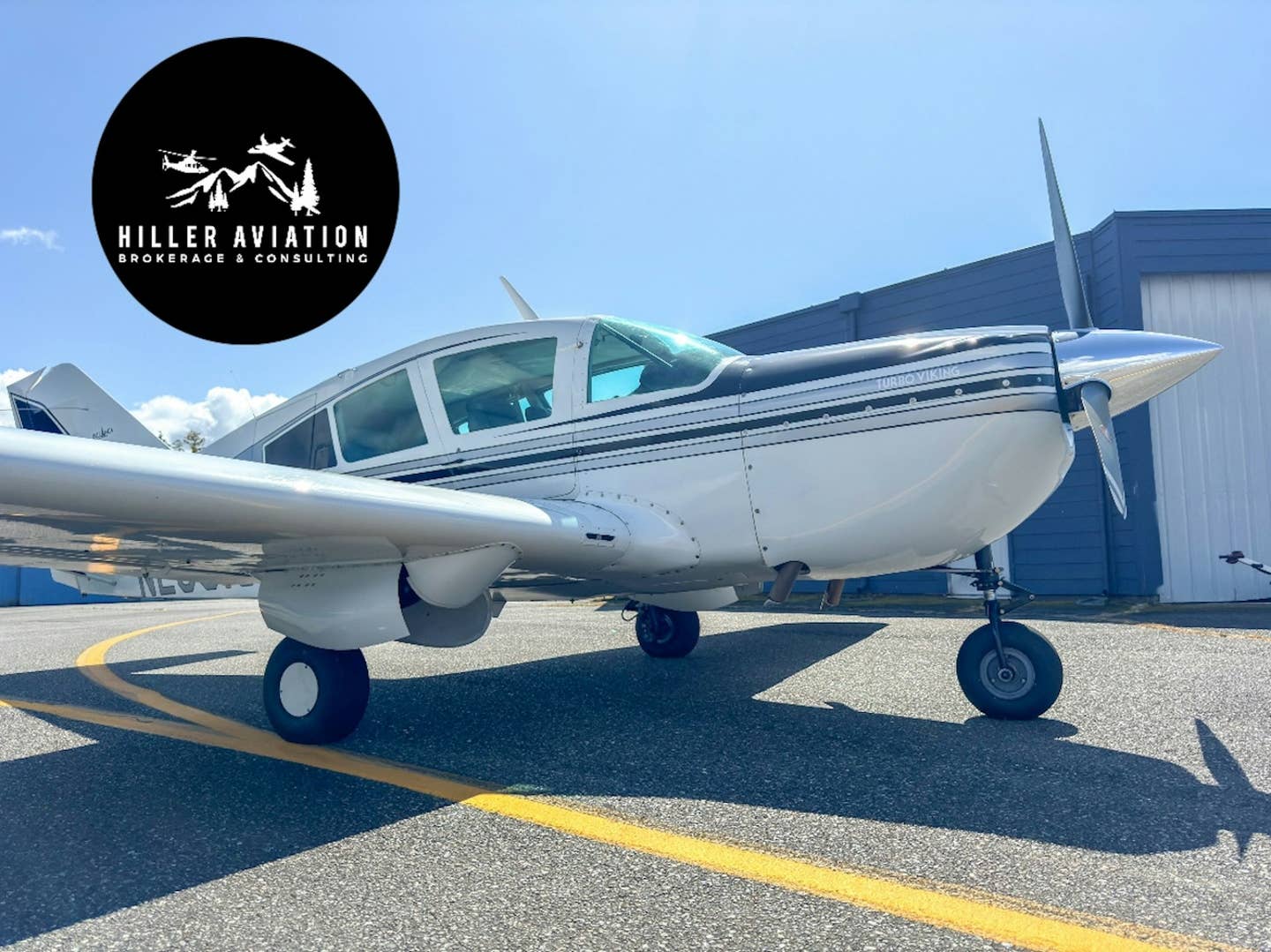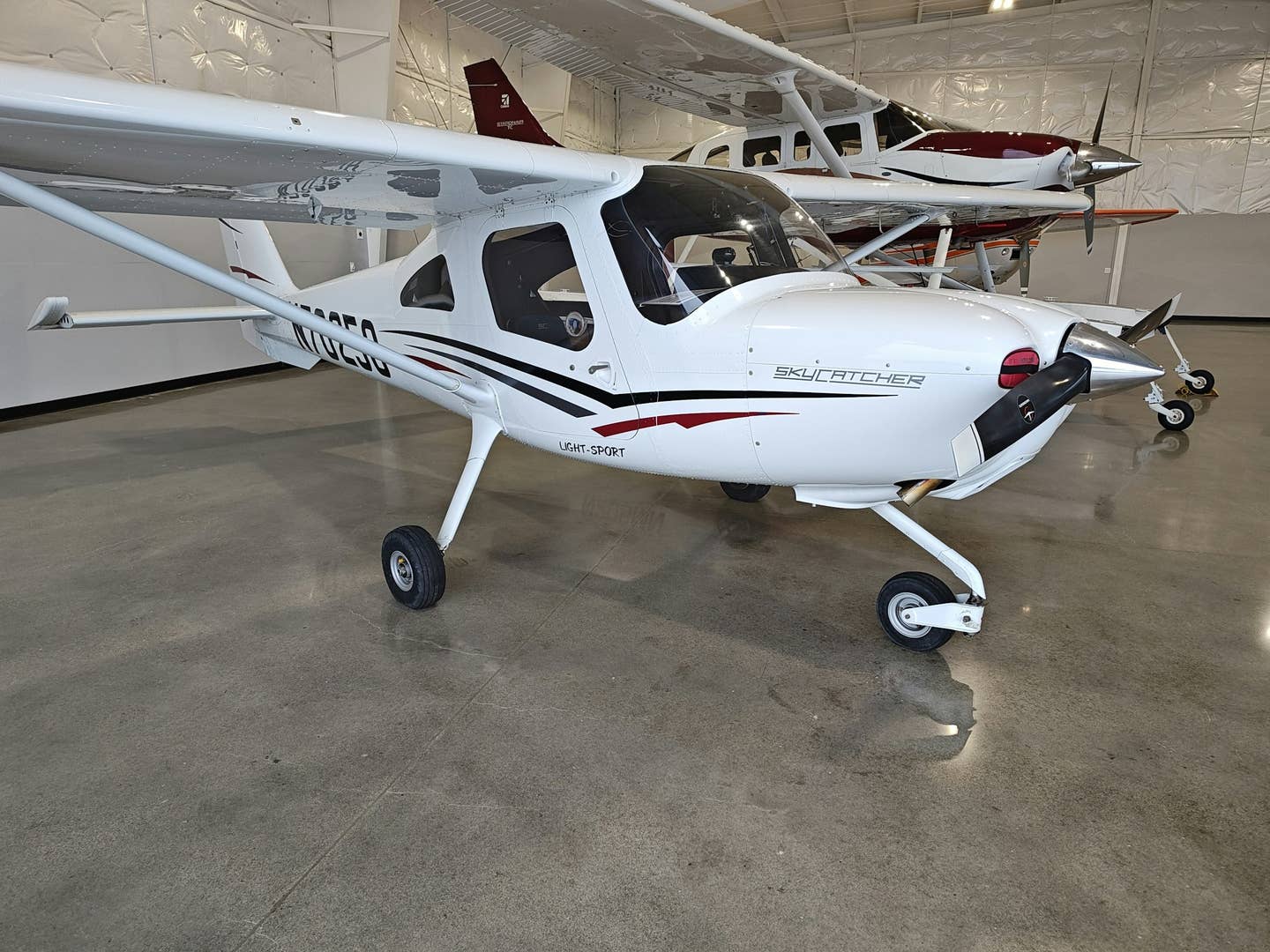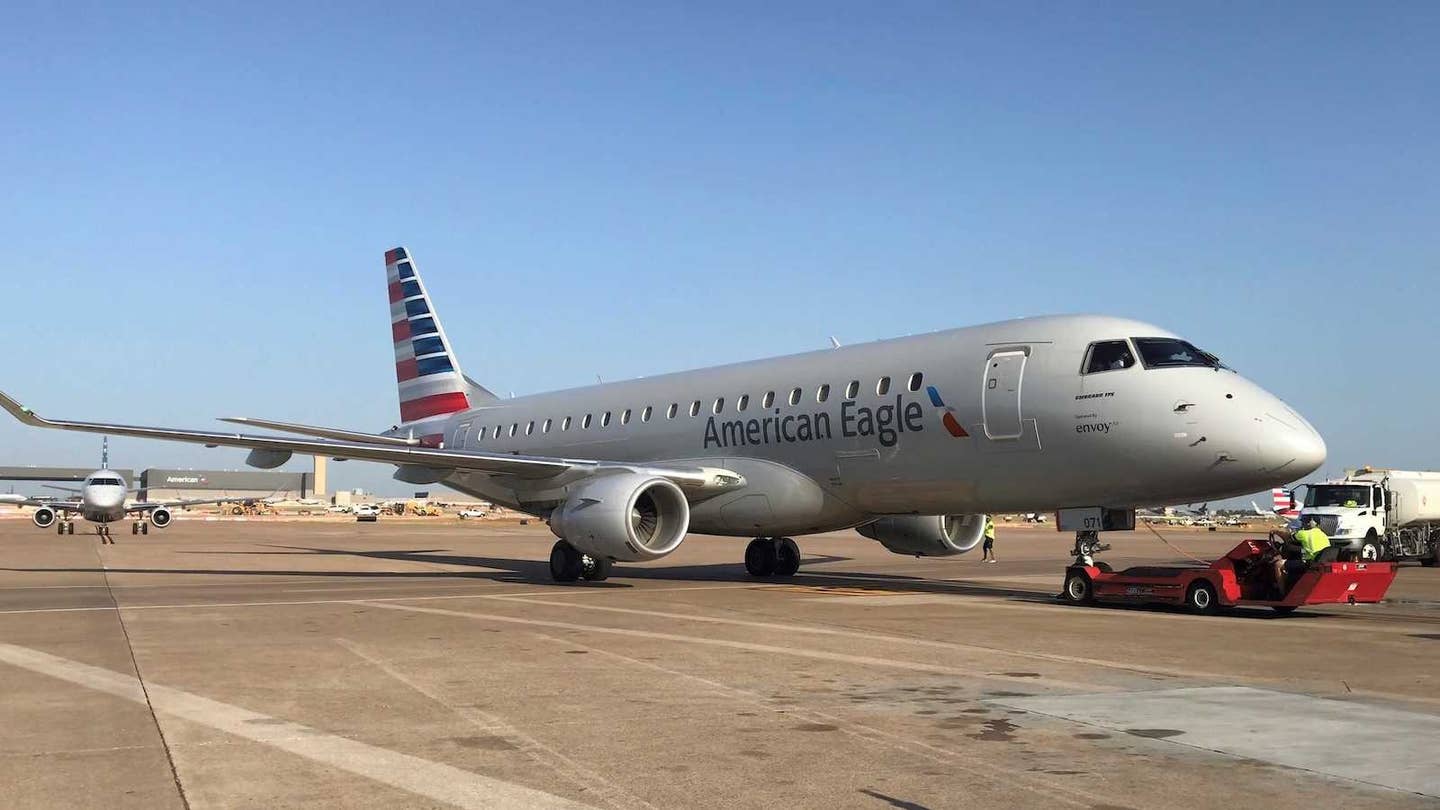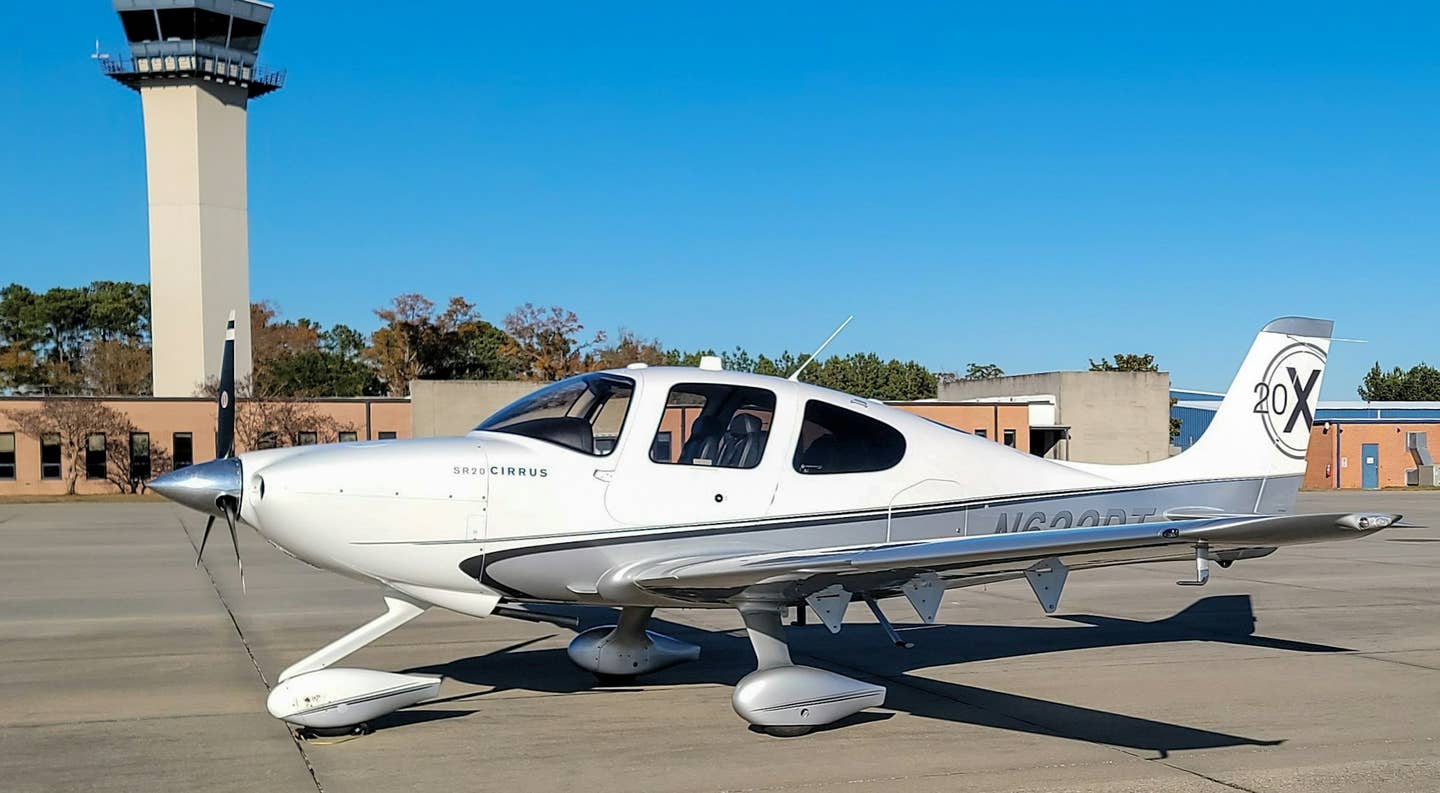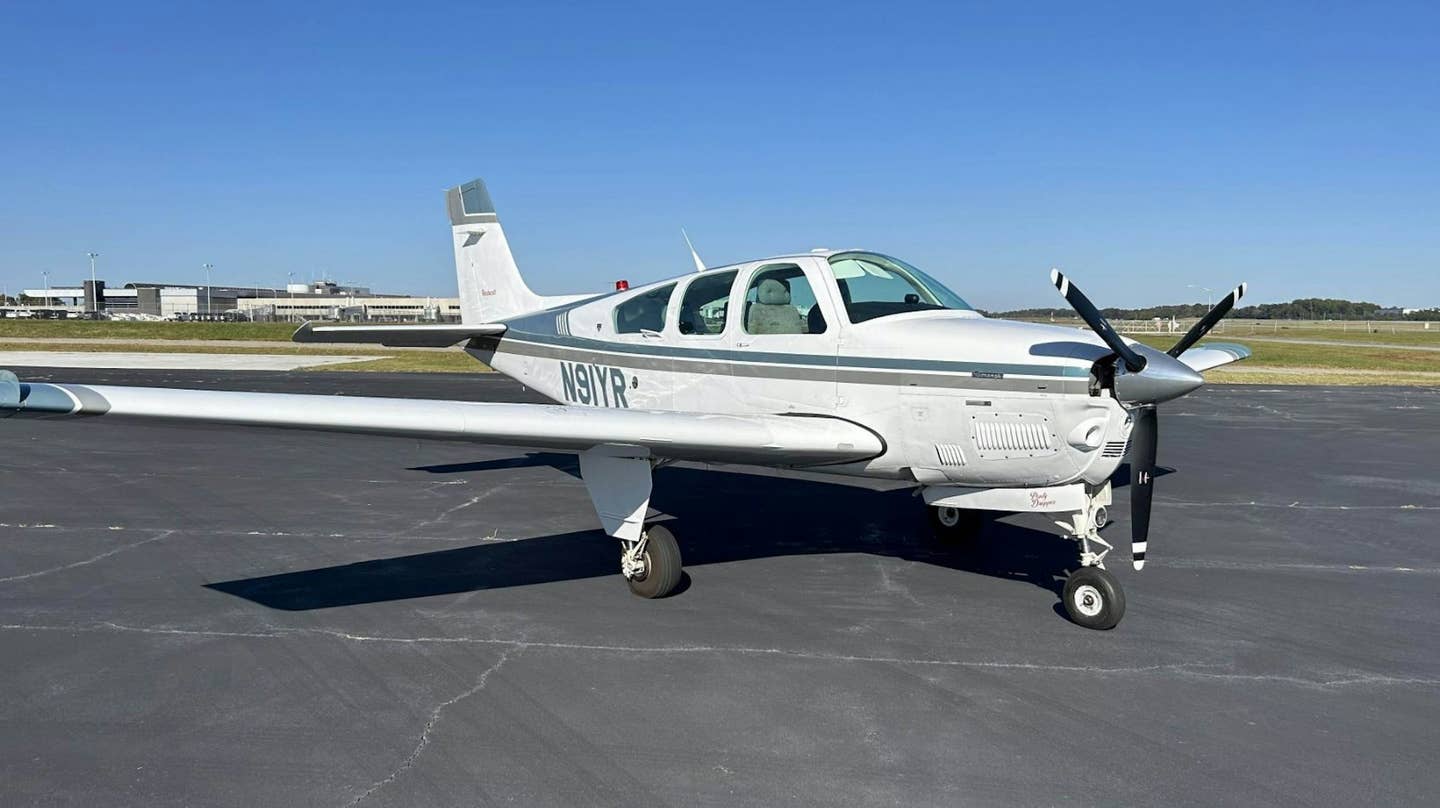
Cessna Citation XLS+
Airframe by Cessna. Engines from Pratt & Whitney. Avionics by Collins. In a world where we all wonder what became of the blue chip companies, these three names are still rock-solid leaders in business aviation. So it is only natural that they would team up to make the Citation XLS, the bestselling business jet for many years, even better as the new Plus model.
The airplane has been an industry leader ever since Cessna put a traditional midsize cabin on its high technology straight wing back in 1998. Teamed with the Pratt 545 series turbofans, the low-drag wing delivered cruise speeds well above 400 knots, exceptional climb performance, and the short runway and low speed docile handling characteristics of a straight wing.
The XLS+ cabin has 5-foot 8-inch headroom so passengers find it easy to move about. There is an enormous 90- cubic-foot baggage compartment in the tail cone, and the quality and design of Citation interiors have improved steadily to compare with any in the industry.
In other words, the XLS line has delivered more of what people want in a business airplane for the lowest cost. And the new Plus version makes the airplane better with improved engines, Pro Line 21 avionics, and a list of now standard equipment that provides more capability and comfort for about the same cost as the previous model with similar equipment.
It's going to take a true Citation expert to tell the Plus from the previous XLS model by looking at the Plus on the ramp. The only significant clue is a new, more shapely nose. The XLS, like other members of the Citation 500 family, has the sort of flattened cone nose that traces its shape back to the original Citation. The shape of the nose and radome is critical on a business jet with aft-mounted engines because ice that forms on the nose can break off and fly back into the engines. Pointy objects are good ice collectors, meaning ice will accumulate faster on a sharp cone than a more blunted surface. The issue is so potentially important that the graceful pointy beaks of the Learjet 20 and 30 series even have an anti-ice fluid flow to the radome to prevent ice accumulation.
The rather blunt shape of the earlier Citation noses handled ice well and was reasonably low in drag. But when Cessna was developing its large midsize Sovereign a few years ago it was able to design a sharper nose that was both low in drag and did not cause ice problems. When you look at the new Plus nose it doesn't jump out at you that it is different because, well, it looks just right for the shape of the forward fuselage and canopy. But when you see the new airplane beside the previous model you will immediately see what the rhinoplasty did for the airplane's looks. And the drag is a tiny bit better, too.
But in the cockpit and cabin the Plus is impressively different from the XLS. The four big flat-glass displays of the Pro Line 21 systems, and the dual FMS systems, are instantly obvious. But a closer inspection reveals that Cessna has updated the entire cockpit configuration to bring it up to current thinking in optimum human factors design.
In the center is a new pedestal with the FMS control keyboards in the front angled for easy viewing and use. The instrument sub-panel is angled for easy access by either pilot. Many of the toggle switches have been replaced by on-off buttons that show their status with "On" in light blue or "Off" in white. And system control switches have been relocated in a more logical fashion for good crew coordination and cockpit flow.
The idiot lights of the annunciator panel are gone, replaced by the Pro Line 21 crew alerting system (CAS) that uses plain language messages on the multifunction display (MFD) to alert the crew to system status or failures. Master warning or caution lights still flash to call your attention to the message, or a voice call issues a warning, but gone are the days of trying to remember what it means if a caution light comes on flashing, or did it come on steady, because they could mean different things.
The new flight guidance control panel from Collins is mounted right at the top of the glareshield, where it should be for easy selection of guidance modes, assigned altitude, heading, altimeter setting, vertical modes and so on. These are the functions that pilots use the most frequently in the busiest airspace, and in the past they were often stuck down in the aft part of the pedestal where you had to look down and hunt for them.
The Pro Line 21 autopilot system also has an automatic emergency descent mode. If, when flying above 30,000 feet, the cabin depressurizes, the autopilot will automatically start an emergency descent at maximum speed. Because there is no autothrottle the pilots need to retard the power and extend the speedbrakes for maximum descent rate, but the autopilot will automatically maximize the descent rate until it captures and holds 15,000 feet awaiting further pilot input.
The Collins integrated flight information system is also standard in the Plus. This "file server," as it is often called, allows the display of all manner of moving maps, weather and Jeppesen charts. XM Weather is also standard. Providing this information, which is now old hat in propeller airplanes, is a more difficult design issue in transport category jets because avionics hardware and software have variable certification standards. Flight critical information, dubbed Level A, must be isolated from any potential network bug or failure that could disrupt it. But the Collins file server is physically and electronically segregated from the critical information on the Primary Flight Display, for example, so it can be updated and modified without the need for lengthy testing and demonstration to prove that it can't interfere with other functions.
The changes in the Plus cabin are evolutions of work Cessna has done on its other jets, particularly the larger Sovereign. By redesigning the cabin sidewalls to include armrests, the seats in the Plus are wider and more comfortable without intruding on the aisle. New materials for the sidewalls and cabin headliner provide greater space, and a smooth, substantial appearance. And virtually all lighting has been changed to cool, long-life LED. And with a standard APU the XLS+ cabin can be cooled or warmed on the ramp to be comfortable as soon as passengers arrive.
Cessna pilot Dave Shonka and I were able to spend time on a complete walk-around of the new Plus in Cessna's new flight operations hangar, which was great because the winter temperatures were in the single digits outside. The Plus has standard single-point pressure refueling. The flushing potty can also be serviced on the ramp via another access panel. The baggage compartment door is big and low enough that hoisting the luggage in is no backbreaker.
The fit and finish and paintwork on the Plus are very impressive. All the control surfaces and speedbrake panels nestle perfectly to the smooth surface of the wing. Hot bleed air keeps ice from forming on the polished leading edges, and the landing/taxi lights shine through lenses in the belly fairing.
The XLS, like most in the Citation family, has trim tabs on the elevator. However, like the large cabin Gulfstreams, the horizontal stabilizer is repositioned to cancel the pitch change caused by flap extension and retraction. As the flaps are moving the leading edge of the stab is repositioned, which re-trims the airplane to cancel stick force change. Many jets move the stab to accomplish all pitch trim, but the two-position stab, plus conventional trim tabs on the elevator, is a form of "auto trim" with flap change so pilots don't have to roll in a large amount of trim for the new configuration.
Another important change in the new Plus model is full authority digital engine control (fadec) of the engines. The previous XLS model has electronic engine computers that behave much like fadec in terms of adjusting the engines for variations in altitude and temperature, but they lack the full authority to set power in all phases of flight. From start to shutdown, the fadec computers will command the engines to deliver whatever amount of power the pilot asks, without the worry of exceeding any engine limitation.
Part of the change to fadec control is a new throttle quadrant with big, beefy levers that are moved to detents for takeoff, max continuous or cruise power. The new levers also have the speedbrake switch mounted on the outboard side of the handle, so you can select speedbrakes with a flick of your thumb instead of reaching for a toggle switch on the pedestal. After touchdown your thumb extends speedbrakes and your fingers reach forward and grab the thrust reverser piggyback handles, all without moving your hand from the throttles.
The XLS+ that Dave Shonka and I flew was the second complete airplane off the line, and though there are not many options available because so much is standard, this one had almost everything available installed. The basic operating weight, which includes the weight of two pilots, cabin stores, manuals and so on, was 12,791 pounds. That is only 91 pounds more than the standard BOW, so you can see just how complete the Plus airplane is as standard.
We loaded on 4,000 pounds of fuel, a passenger, a little baggage and our ramp weight was 17,030 with a takeoff weight of 17,000 pounds. That is well below the max takeoff limit of 20,200 pounds, but it was a fairly typical weight for the way people use the XLS+, with enough fuel to fly two hours or a little more at high-speed cruise with full reserve. With a typical cruise speed of around 430 knots or a little more, you can go a lot of places in two hours. With full tanks the XLS+ can stretch out to more than 1,800 nm with no wind. With that range the XLS+ is a one-stop coast-to-coast airplane against any headwind, and for operators anywhere but the coasts of the United States, most destinations in the country are routine nonstop flights.
Cessna and Collins are just now completing development and certification for the performance data and WAAS GPS approach approval to be loaded into the Pro Line 21 system. With that software in place the FMS will calculate all takeoff speeds, required runway lengths and so on, as well as show optimum climb and cruise altitudes. The WAAS approval brings the Plus up to the latest in required navigation performance (RNP) so that it can fly advanced arrival and departure procedures, as well as the ILS type of approaches based entirely on GPS signals.
The best way to describe the XLS+ as you move away from the chocks is that it requires absolutely no pilot accommodation. The nosewheel steering, which is mechanical, feels instantly natural. And so do the carbon brakes that have none of the grabbing or odd pedal feel that you need to adjust to in some airplanes. Pilots will feel at home immediately.
The Plus impresses in many respects, but the greatest delight is the way it climbs. If you don't get the power way back, and the nose down from liftoff angle, you'll be going up at well over 4,000 fpm and will blow right through the initial level off almost every takeoff clearance includes. At Wichita it is the norm to be cleared to 5,000 feet initially, and with an airport elevation of 1,333 feet, you'll blow right through the assigned altitude, or the airport area 200-knot speed limit, or both if you're not quick with a big power reduction. You don't really expect the amazing climb the XLS+ achieves based on its conservative all-business appearance, but the long straight wing and Pratt engines are a magical team.
| The airplane flown for this report was the second Plus model delivered. In addition to standard Pro Line 21 integrated avionics system with four flat-glass displays, it was equipped with the optional second FMS and HF comm radio plus several cabin options. The options added only 91 pounds to the standard weight, and represent a typical Plus. All data here is from the airplane manuals and represents standard day conditions at maximum weight, unless noted. |
On this day the air temperatures were near standard, but cloud layers forced us to keep engine anti-ice heat on for most of our climb to cruise, and the bleed air used for heat costs a little engine power and reduces climb. But the Plus was through 30,000 feet in just under 10 minutes, and level at our requested cruise altitude of 38,000 feet in 14 minutes. The airplane could have easily continued up to its certified ceiling of FL 450, which it can do even after a maximum weight takeoff, but FL 380 is a more typical altitude for shorter trips where you trade higher cruise speed for a little more fuel flow.
The manual said we could leave the power in the maximum cruise detent, but that was too much power. In a couple minutes the Plus accelerated through its Mmo maximum Mach limit of .75 and the airspeed tape turned red, and the purposely annoying overspeed aural warning commenced. I had to bring the power all the way back to 1,200 pph fuel flow to stay under the Mach limit, and that is at least 170 pph less fuel than the book predicts. The new "C" versions of the Pratts are clearly overachieving, and Cessna is doing a great job on controlling drag.
All that can be said about the flying qualities of the Plus at any speed or altitude is that they are conventional, meaning there are absolutely no surprises. Test pilots use a scale to rate flying qualities that, to the rest of us, looks upside down because the best airplane behavior is rated a zero, and the worst a five. The reason test pilots love zero on their scale is that it stands for no surprises, or no need for the human pilot to learn to accommodate a quirk in the airplane's behavior. The XLS+ may not be a perfect zero, but it sure comes close.
Cessna has done an excellent job in noise attenuation in the Plus, both in the cockpit and cabin. I'm sure much of the low cabin noise can be attributed to the careful shape of the electrically heated windshields, nose and canopy that keep air flowing smoothly. And the cabin and cockpit benefit from excellent insulation that controls sound, and avoids cold spots when your arms or legs are right up against the outside wall. The two-zone temperature control system keeps a sunlit cockpit and a cabin in the shade both very comfortable.
The Pro Line 21 system is so full of capability that it takes many hours to learn to use the system fully, but one of the excellent features I had not seen before is a new altimeter preset window for descent. What almost always happens is the controller clears you to descend to an altitude below FL 180, reads the altimeter setting, and often a new heading or fix. All pilots develop a system of how to record the altimeter setting so they don't forget it when they go through FL 180. Some write it down, some of us put it in the standby altimeter, some try to remember it. But in the Plus when you turn the "baro" set knob while above FL 180 -- or wherever the transition altitude is in other parts of the world -- the altimeter setting goes into a little window below the 29.92 standard setting. When you go through FL 180 the window flashes and the altimeter setting becomes active. Many avionics systems prompt you to set 29.92 when climbing through 18,000 feet, but this is the first I've seen that also takes care of you on descent.
For landing at a typical weight, Vref approach speed in the Plus is going to be 105 to 110 knots with a required runway of less than 3,000 feet. The airplane has long stroke trailing-link main landing gear, and with its straight wing is extremely stable at approach speeds, so excellent landings are simply the norm. Even in gusty conditions passengers should demand and expect a smooth touchdown because the airplane is just so well behaved. Start the APU in flight, or as you taxi in, and the cabin stays fully lighted, and heated or air conditioned after you shut down the engines, and the passengers can gather their stuff and head for the exit in perfect comfort.
For more than 10 years pilots and passengers of the XL, then the XLS, and now the XLS+ have gone comfortably, smoothly and safely about their business with a maximum of utility combined with expected comfort. And that's why the XLS+ will continue to maintain a AAA rating among business jets.

Sign-up for newsletters & special offers!
Get the latest FLYING stories & special offers delivered directly to your inbox

